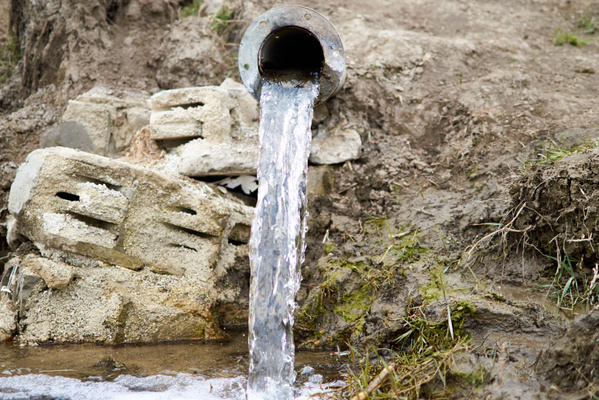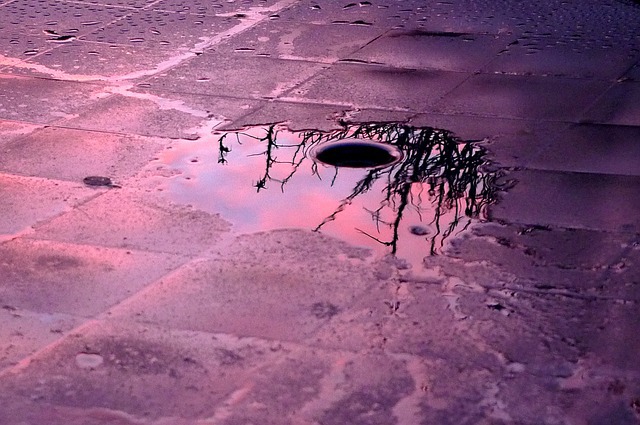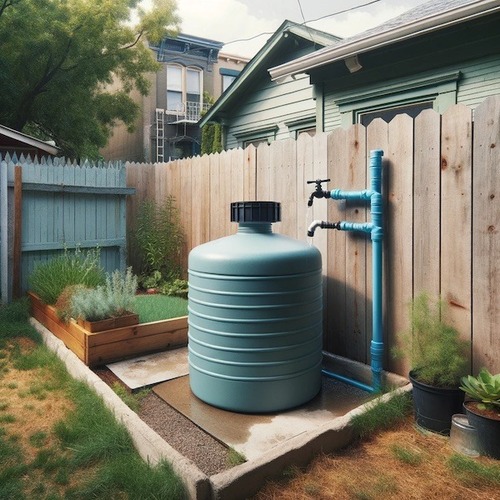How to Solve Storm Runoff While Staying Green

Storm Runoff
Storm drains in the San Francisco area discharge directly into San Francisco Bay , thereby allowing the water to carry surface debris and chemical pollutants with it. These pollutants destroy local fisheries, cause algal blooms, and alter the local ecology, so mitigating strategies are clearly necessary. Redesigning storm drains is not realistic given the extreme costs involved, so what can the metropolitan area do to solve these problems?

Urban Storm Drain Runoff
The answer is a concept called Low-Impact Development, or LID. The primary principle behind the concept is that trees and other types of “green infrastructure” can help reduce the problems associated with storm runoff—primarily by virtue of their water-storing abilities. In this way, LID principles seek to manage rainwater where it falls rather than by transporting it to another location. In addition to being highly efficacious, LID is less expensive than traditional water management strategies.
LID proponents embrace a variety of different strategies, techniques and tactics such as those listed below.
Street Trees

An Urban Tree-Lined Street
Street trees significantly reduce stormwater runoff in urban settings like San Francisco by intercepting rain, absorbing water, and stabilizing soil. Strategic placement across varying elevations maximizes their effectiveness. Incorporating diverse tree species enhances urban design flexibility and also supports environmental sustainability by reducing reliance on costly engineered drainage systems. This approach promotes healthier urban environments and serves as a sustainable model for cities to follow.
Rain Gardens
Rain gardens are patches of flood-tolerant plants and trees that serve as natural stormwater management systems that can be placed at various elevations. By directing runoff water to flow across these areas, the vegetation and substrate slow down the water, allowing for increased absorption by the plants and trees. This process not only helps mitigate flooding but also improves water quality by filtering out pollutants and sediment before they reach larger bodies of water. Additionally, rain gardens contribute to biodiversity and provide valuable habitat for local wildlife, enhancing the overall ecological balance of urban environments.
Swales and Curb Cuts
Swales are vegetated areas strategically placed along runoff channels, such as medians, incorporating small trees and ornamental plants. These channels are coordinated with small voids in the curbs, directing runoff water into the swale. Once in the swale, the vegetation and soil act as natural filters, absorbing and slowing down the flow of water. Swales and curb cuts are a great way to reduce erosion and flooding, promote groundwater recharge, and enhance the overall resilience of urban landscapes to stormwater events.
Green Roofs
Roofs that are covered in grass or plants, commonly known as green roofs, play a vital role in reducing stormwater runoff by absorbing rainwater directly on the roof surface. By retaining rainfall, green roofs minimize the volume of water flowing through gutters and downspouts, mitigating the strain on urban drainage systems. This natural process helps to alleviate flooding and erosion while promoting sustainable water management practices in both commercial and residential settings. As a bonus, green roofs provide insulation, reduce energy costs, and enhance urban biodiversity by providing habitat for birds and insects.
Rain Cisterns

A Rain Cistern in an Urban Backyard
By connecting large tanks to the rain gutters of buildings, you can stop vast quantities of rainwater from reaching the ground at the same time, easing the impact of heavy rainfall events in urban areas. This reduces the amount of runoff water flowing down the street and also provides surplus water for other needs, such as irrigation. This helps promote water conservation and resilience in water-stressed areas. Additionally, storing rainwater in tanks can help recharge groundwater aquifers, contributing to sustainable water management practices and ensuring a more reliable water supply during periods of drought.
Pervious Surfaces
Many runoff problems can be solved by replacing concrete sidewalks and roads with surfaces that allow water to percolate to the soil below. Pervious pavements and paving stones feature numerous holes that allow water to pass into the underlying soil. Just like the other methods we've discussed, this helps alleviate flooding and promotes groundwater recharge, replenishing aquifers and sustaining local water resources. Permeable surfaces contribute to urban cooling through evaporation, mitigate the heat island effect, and enhance the aesthetic appeal of urban landscapes.
Conclusion
Part of the beauty of LID principles is that they are applicable to landowners and municipalities alike. If you are interested in implementing LID features, contact Arborist Now and consult with one of our experienced team members. They can then help you select the best species for your tree installation project.
Previously published on June 19, 2016.





